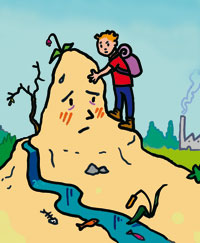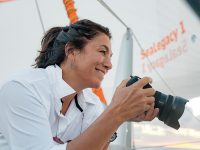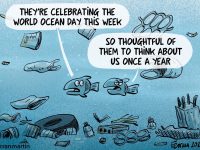
Illustration: Anna Sanchis
Technicians are trained to develop projects and solve problems. Scientists are trained to understand things they only observe. When these attitudes are taken to extremes, they become unhealthy. The truth is that these attitudes are often taken— too often, actually. Some scientists are permanently on crusade against the technicians’ absurdities, who are anathematised from a comfortable distance. This is, in my view, even a sadder position than the rude technician’s who frantically projects not considering where or why.
Science springs from a method that measures and contrasts. Without measurements, thinking is something vague. Poetic analogies —wonderful and in my view indispensable to develop feelings— are not useful for understanding. At least for understanding some things. This is where the difference between thinking and speculating lies. Naturalist scientists excel in this. The science historian Josep M. Camarasa —who is an environmentalist like myself— claims that ecology is a romantic science. He means that it has dismissed the knowledge developed by 20th century physicists. Nothing is measured. Well, at least in ecology you get some measurements. Traditional experts in natural sciences particularly avoid numbers. They tend to qualify subjective apriorisms as expert criterion.
How to quantify landscape —or goodness or love for that matter? Using conventions. Linear and discrete phenomena are quantified by themselves— we all agree in that. There is any number of milligrams of cholesterol in your blood, there is nothing else to it. But, your health— which is the landscape of the organism— is not linear, nor discrete. That is why it demands an expert criterion and some evaluative conventions. It needs a complex nth degree equation — probably too extensive in practice— but always reducible to an approximative model that enables us to get an approximate idea.
«Life-cycle assessors have no thermometers. The lay their hands on the sick creature’s forehead and knit their brows»
Temperature does not physically exist. By convention, Celsius established that water froze at level 0 and boiled at level 100. Due to this convention now we know whether our bodies are at 36.8, 37.4 or 38.9. Thermometers had to be invented. Before Celsius (or Réaumur or Fahrenheit) and before inventing and producing thermometers, temperature was a faint concept, something immeasurable. At what point we do have a fever or when this fever is alarming the thermometer does not tell— the expert does. Thermometers do not indicate fever, and even less at what point this fever is indicating some kind of disease or how to fight it. This is the physicians’ job. But first they need to know if we are at 36.8 or 37.4. Life-cycle assessors, for the moment, have no thermometers. The lay their hands on the sick creature’s forehead and knit their brows.
Not all of them and not always. Some make efforts to standardise, quantify and weigh. Assessments can therefore be contrasted with other assessments and themselves. That results are susceptible to contrast is an essential characteristic of the scientific method. Not pursuing contrast means remaining out of the scientific sphere. Objecting that the environment is a complex phenomenon is not an acceptable excuse. It is not acceptable saying that we should consider too many parameters. How many operations per second can an average computer perform? The thing is feeling or not the unstoppable scientific urge of seeing a challenge in difficulty. A reasonably feasible challenge nowadays. Probably working side by side with other experts. This is also another characteristic of modern science.





